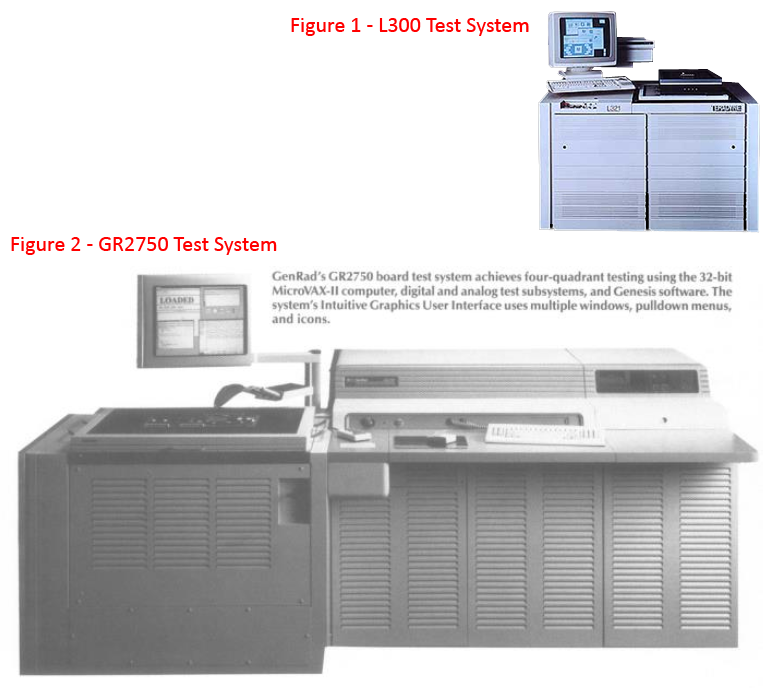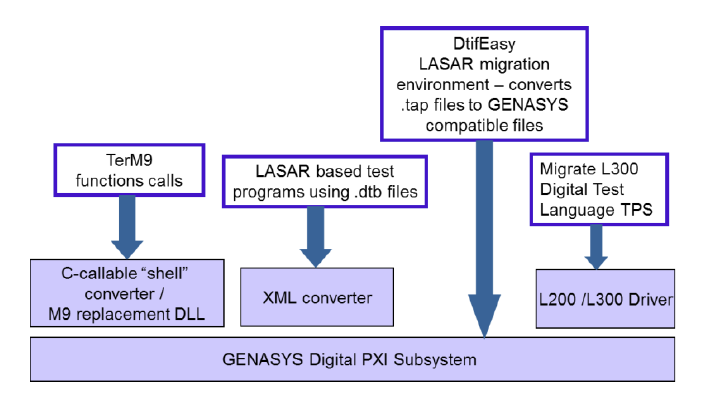Beginning in the late 1960s, proprietary ATE systems were deployed by a wide range of customers for the functional test and verification of high value, mission critical products including board & box level avionics, depot level test & repair of armament and avionics electronics, and communications / satellite sub-systems. Although these test systems are now obsolete, the products (and their derivatives) originally tested on these platforms are still in use and need to be maintained. Consequently, there is an on-going need to either maintain these obsolete systems or migrate the applications and the legacy system's capabilities to a modern test platform. The paper provides an overview of how the PXI architecture, and associated instrumentation and software can provide the basis for a modern functional test platform that can effectively support both legacy ATE functionality as well as future functional test needs.
Commercial ATE functional systems first made their appearance in the market place in the late 1960s. These ATE systems included the Teradyne L125, L200 and L300 and the GenRad GR179x and GR2750, which were all based on proprietary digital, analog, and switching architectures. (Figure 1 and Figure 2) These test systems were deployed by a wide range of customers for the functional test and verification of high value, mission critical products such as:
All of these test systems have now been out of production for over 10 years with maintenance and repair support by the OEM
unavailable.
For those products still in use with military customers, maintaining depot maintenance and support has become an acute problem.
These products (many associated with military programs) have vastly exceeded the life expectancy and supportability of the test systems,
requiring the maintainers to pursue replacement strategies.
Today's test systems are based on standardized, card
modular architectures (VXI and PXI), offering users the flexibility to reconfigure and adapt the test system for a range of applications
as needed. In particular, the PXI architecture, when combined with comprehensive test program migration tools, offers the required
functionality associated with these legacy platforms while providing advanced test capabilities for next generation products.

The proprietary functional test systems developed and sold in the 1980s and 1990s shared several common attributes. These features included:
These systems also shared the characteristics of requiring significant floor space, many kilowatts of input power, and of course a high price tag. Sales prices for these systems could easily exceed $1M USD.
Legacy ATE platforms such as the Teradyne and GenRad systems were very capable test platforms. At the time these systems were
developed and deployed, the goal was to provide a test platform that could address almost any test strategy - in-circuit, functional or
combinational test with both digital and analog test capabilities. However, for the large majority of applications and particularly for
mil-aero related products which were not accepting of in-circuit test methods, these test systems employed functional test methods almost
exclusively.Consequently, replacement test solutions for these legacy platforms are focused on supporting digital and analog functional
test capabilities.
Cognizant of the need to retain both digital and analog test methods, today's replacement test system needs to have the following attributes and capabilities:
Today's functional test platforms are largely based on the card modular architectures of VXI and PXI with PXI being the dominant card modular standard. With over 50 vendors and 1500+ products, its compact footprint and high functional density, the PXI platform is ideally suited for addressing the requirements associated with legacy test systems.
PXI instrumentation and systems have made great advancements since the initial release of the PXI standard in 1997. With the increasing availability of high performance / high density FPGAs and highly integrated analog electronics, high performance digital functional test subsystems based on the PXI architecture are now a reality. By leveraging these various technologies, compact PXI digital subsystems are now available which can be incorporated as part of an overall functional test system. These digital subsystems (Figure 3) offer features and performance that meet or surpass the capabilities of the legacy systems. Specifically, these features include:

Today's functional test systems and digital subsystems can address the legacy test needs of these proprietary systems using PXI components, which offers a reduction in form factor and test system footprint. Besides offering high performance digital test capabilities, these subsystems support hybrid pin capability - preserving the "any resource to any pin" architecture - a hallmark and key feature of the legacy test systems.
To fully replicate all of the capabilities and features associated with a legacy test system, the switching subsystem need to offer the following key features and capabilities:

Figure 4 details the overall switching and digital resource configuration for a legacy replacement system which is modular and configurable. The key components of this system include a modular "input matrix" subsystem, an internal 16 wire bus, and integrated "matrix / mux" switch card which supports both matrix and multiplexing functions. As an alternative the matrix/mux card, the system can employ a non-muxed version, for those system configurations that do not require multiplexed pins.

For high bandwidth applications (> 100 MHz) the architecture supports an HF switch card as shown in Figure 4. This card offers matrix / multiplexing capabilities for high frequency applications as well as the ability to still connect to the internal 16 wire bus if required. The result is a switching architecture that offers outstanding signal routing flexibility while preserving signal integrity.
Both the matrix/mux card and the HF switch card are "extended" 6U PXI cards which utilize the J5 cPCI connector for access
to the 16 wire bus, as well as offering a direct, wireless connection to a 6U Mac Panel Scout receiver.
Figure 5 - 6U PXI Chassis with Scout Recevier -->
The result is an overall switching subsystem that is compact, modular, and reliable since a large number of wired connections are eliminated by employing the Scout receiver. Additionally the receiver can support over 8000 connections, providing adequate I/O support for multiplexed system configurations.
Overall control of the switching subsystem is provided by system level, signal routing software. This software provides end to end to signal routing, from a tester resource to a specific UUT node and removes the complexity of having to explicitly identify a signal path and the associated relays. Additionally, the routing software identifies signal routing conflicts and protects the overall switching system from user created routing errors which could damage the system and relays.
A key component associated with replacing a legacy ATE system is the requirement for software tools that can facilitate test program migration. In most cases, these tools are focused on migrating the digital test aspects of the test programs. Additionally, the tools need to provide support for both simulation-based functional test programs as well as manually generated test programs. The analog portion of these test programs are relatively easy to migrate with conversion being facilitated by the creation simple parsing / scripting routines.
Teradyne's LASAR product was a popular simulation tool that was used to develop functional test programs. Commercial tools are available today that allow users to migrate LASAR based programs by using the .TAP files that were originally developed for the UUT.

Alternatively, software tools are available that can facilitate the migration of manually generated digital test programs. For example, Marvin Test Solutions offers an L200 / L300 software driver as part of its GENASYS platform which allows for a straight forward conversion of L200 / L300 digital test code and vectors.
Converting test programs from legacy test platforms requires a range of software tools. No one conversion methodology will address all scenarios. Consequently, having a range of software tools and methodologies is needed when converting legacy test programs. As shown in Figure 6, various options are available for converting L200 / L300 digital test programs to a PXI platform.
For suppliers of electronic assemblies / systems and users that are required to maintain and support products that have exceptionally long life cycles, the requirement to upgrade or replace legacy test systems cannot be ignored. Historically, users have resisted replacing obsolete test platforms due to uncertainty, costs, and the time associated with these tasks. However, today's PXI products, software and systems now offer users the ability to upgrade legacy test applications and systems. These products offer the flexibility configurability, and a compact footprint which has wide applicability for both factory and depot applications - solving the functional test obsolescence challenge.